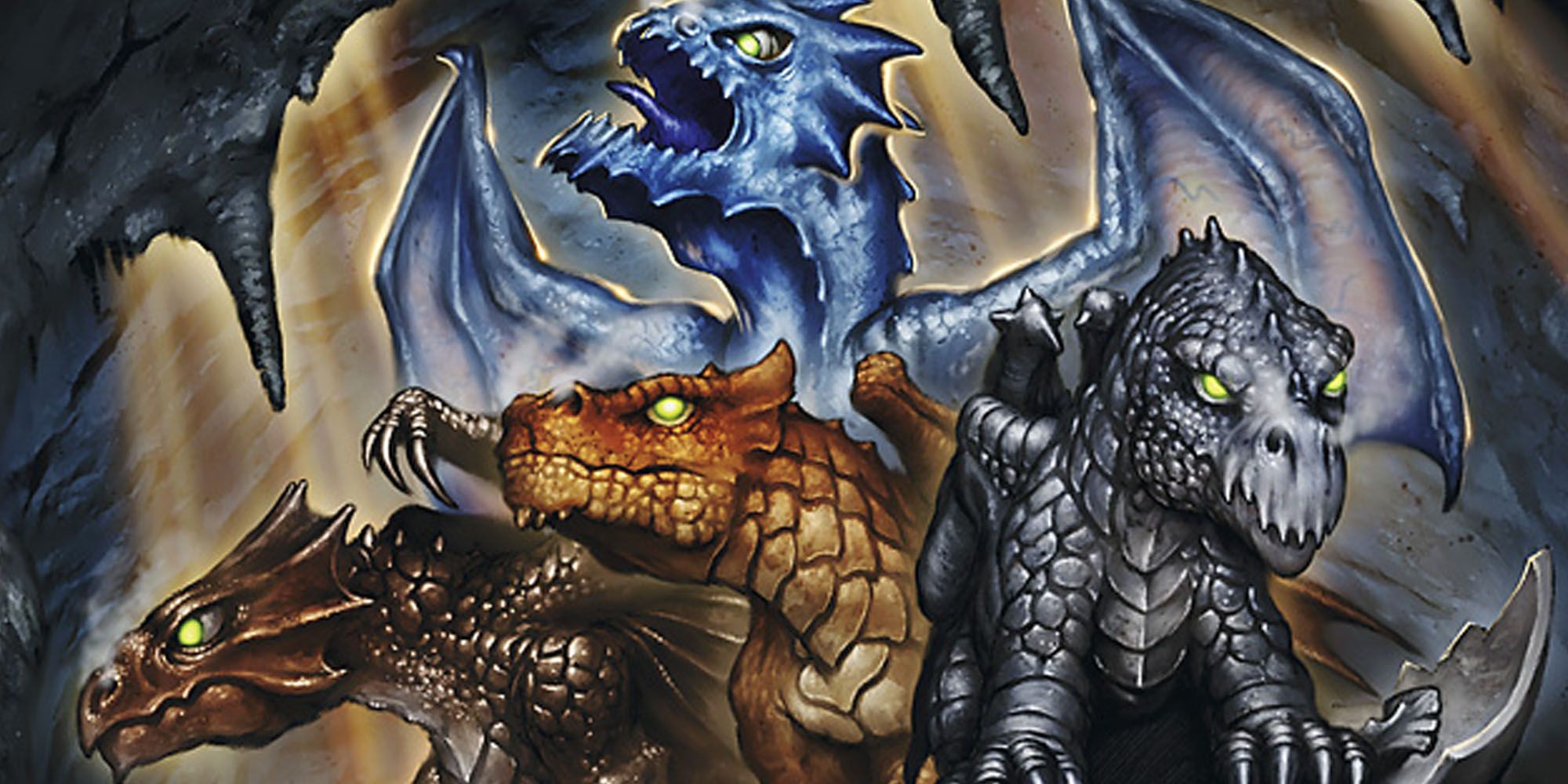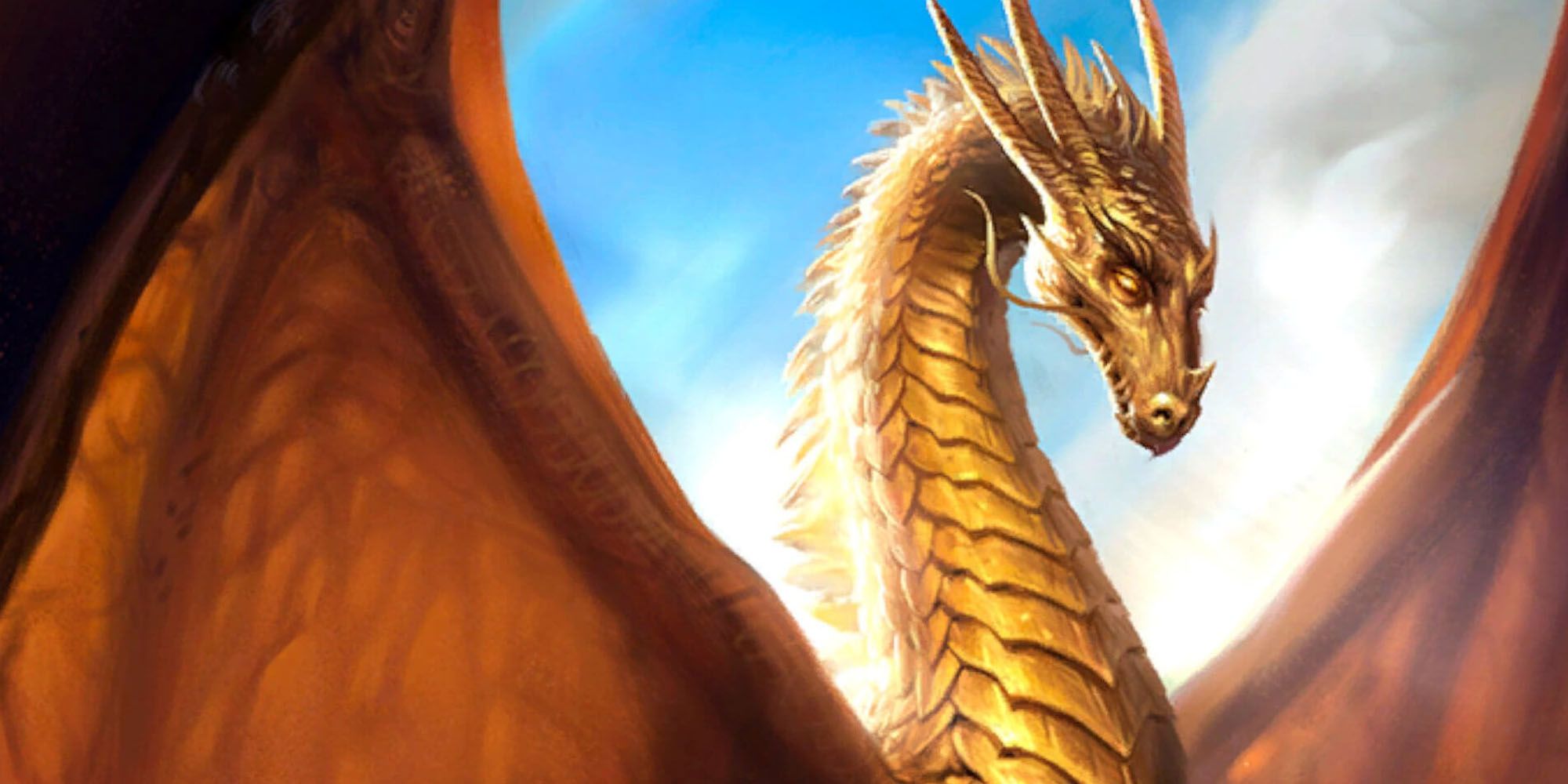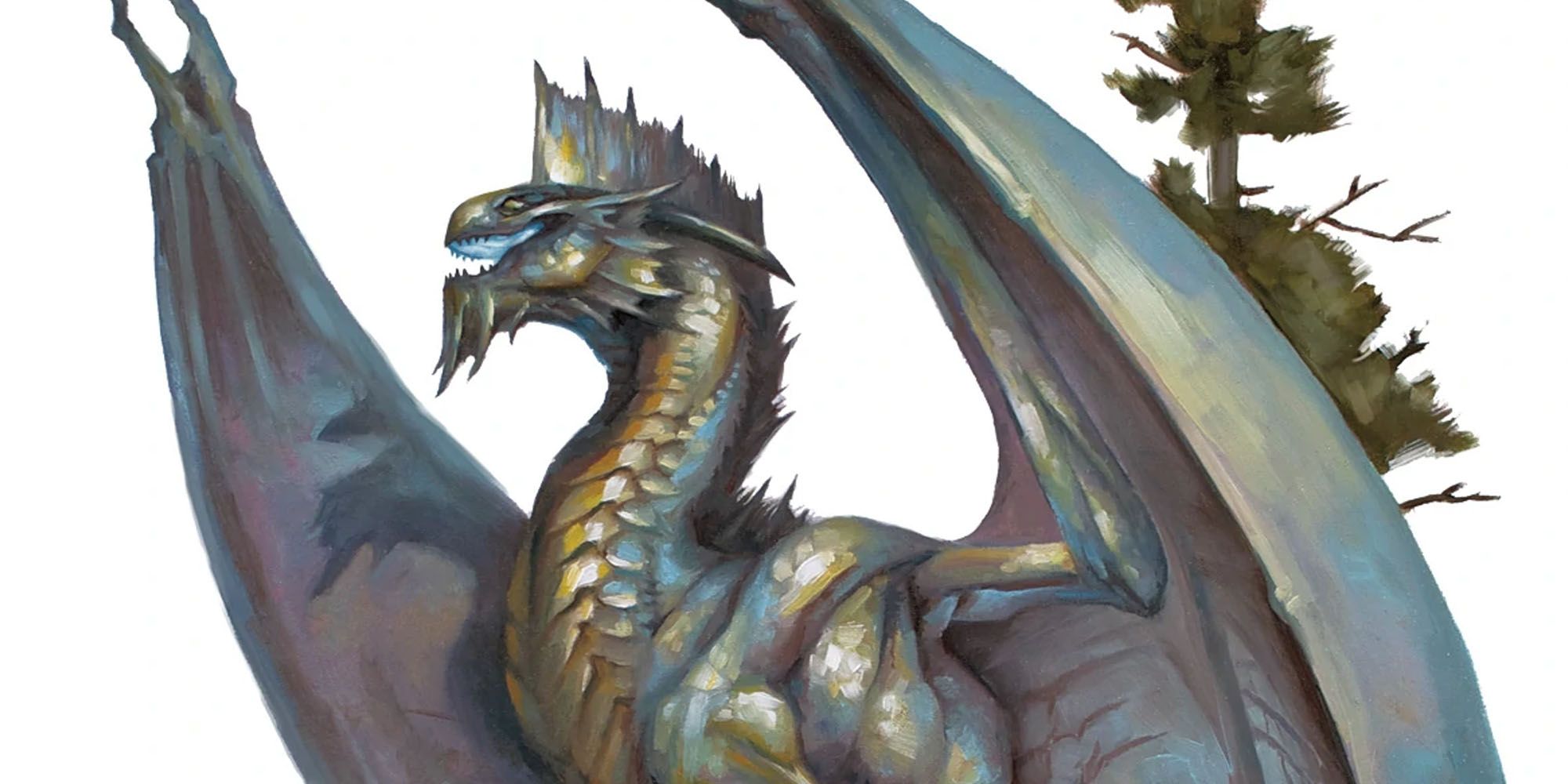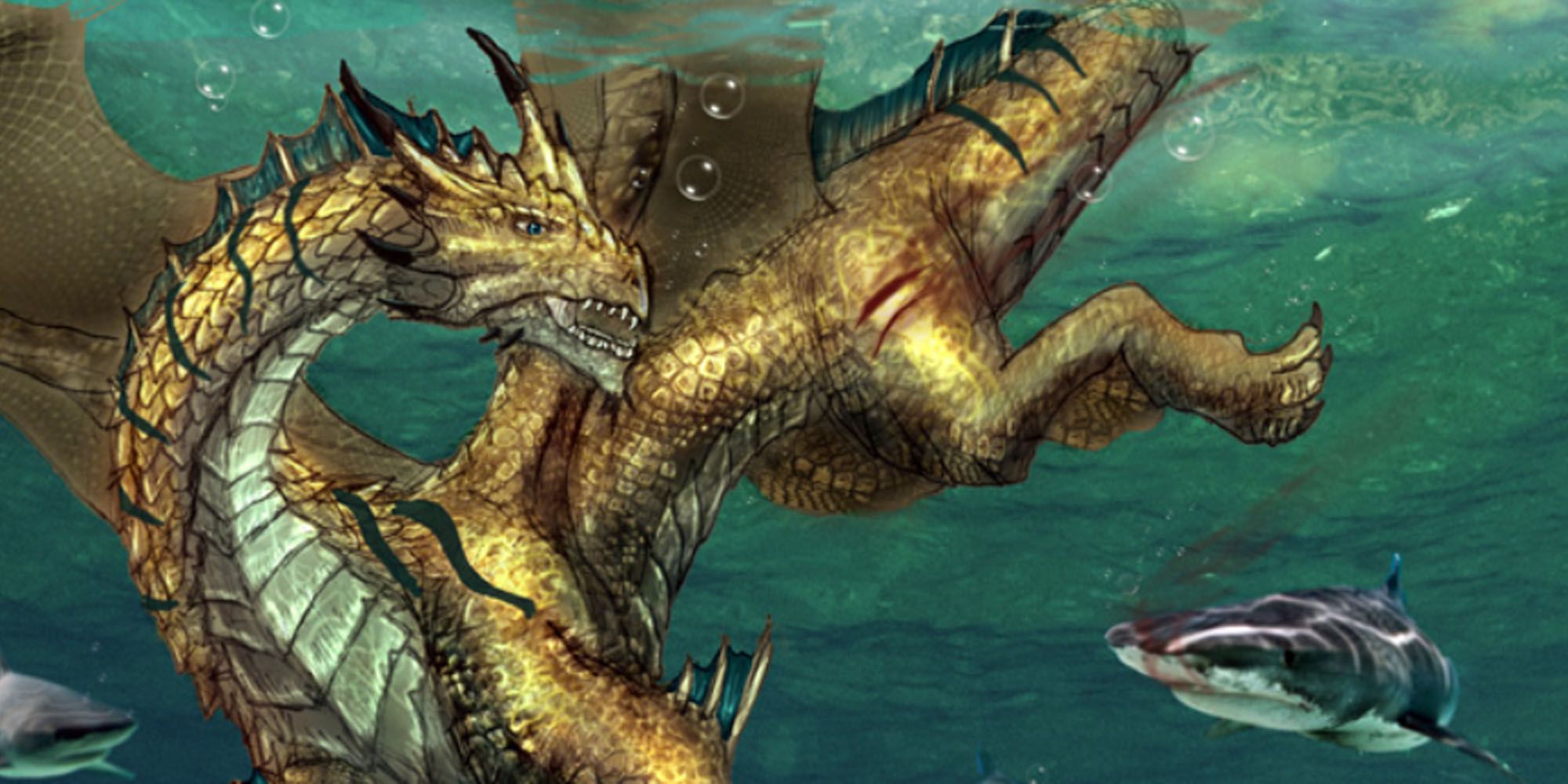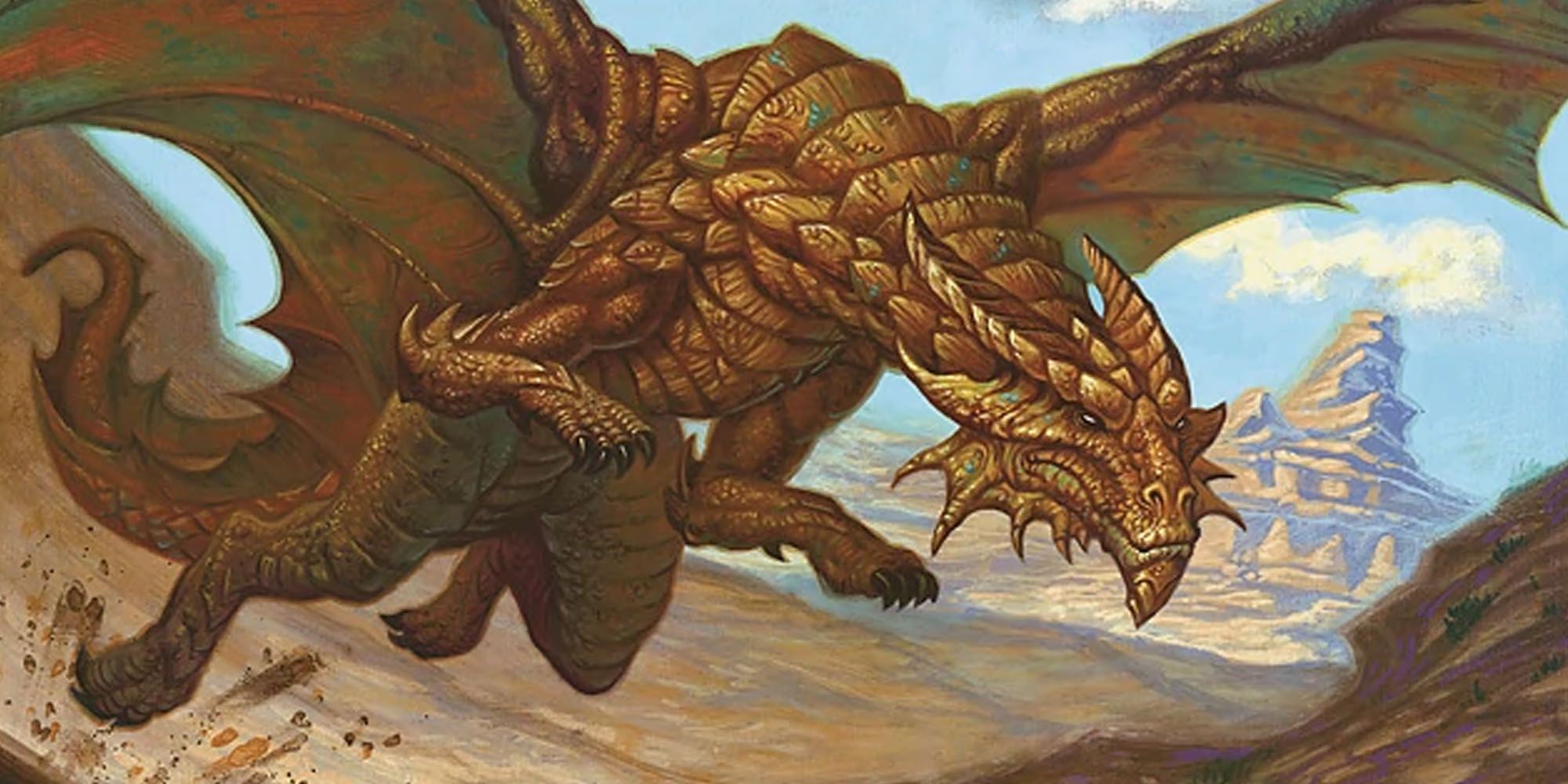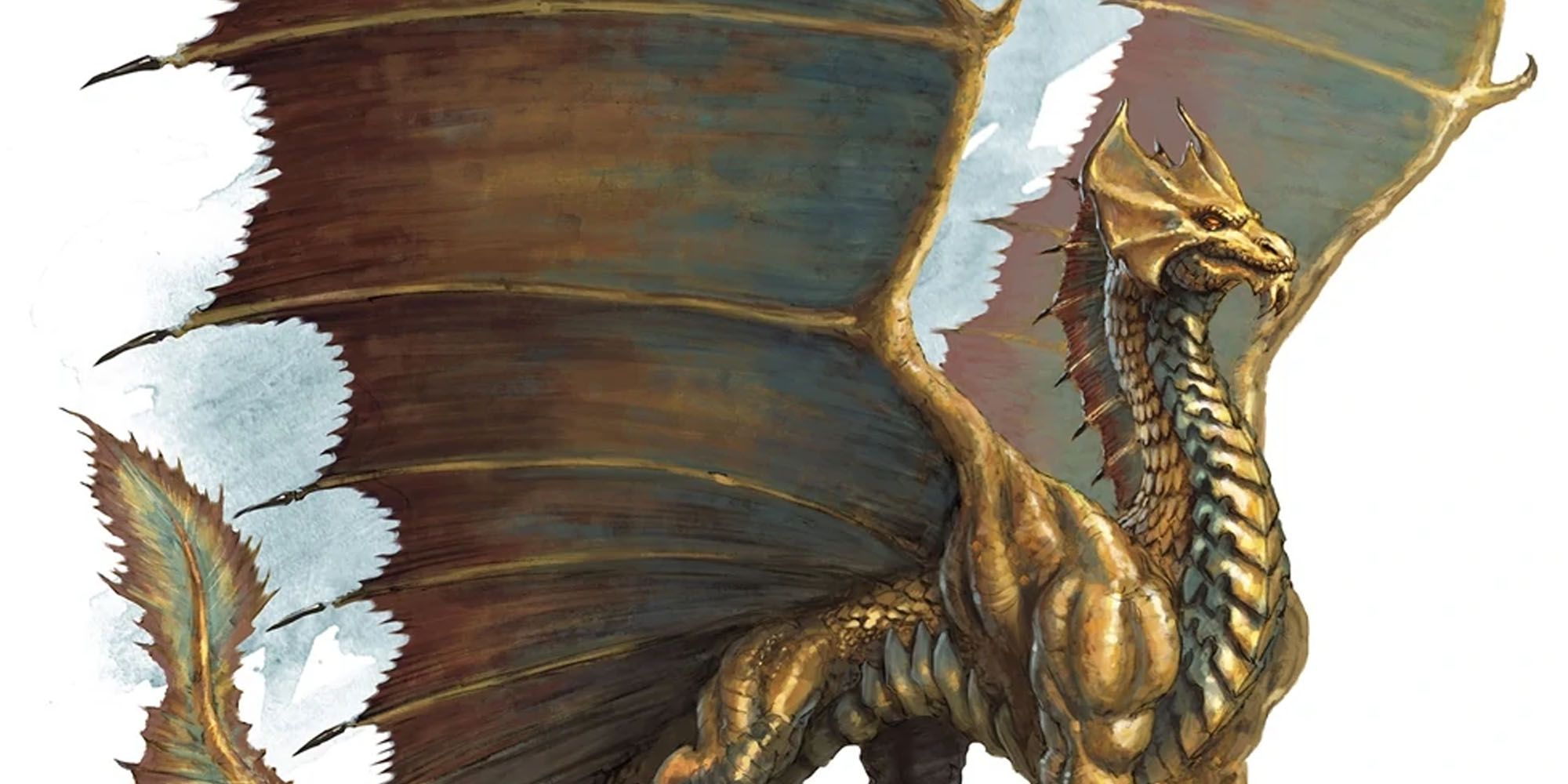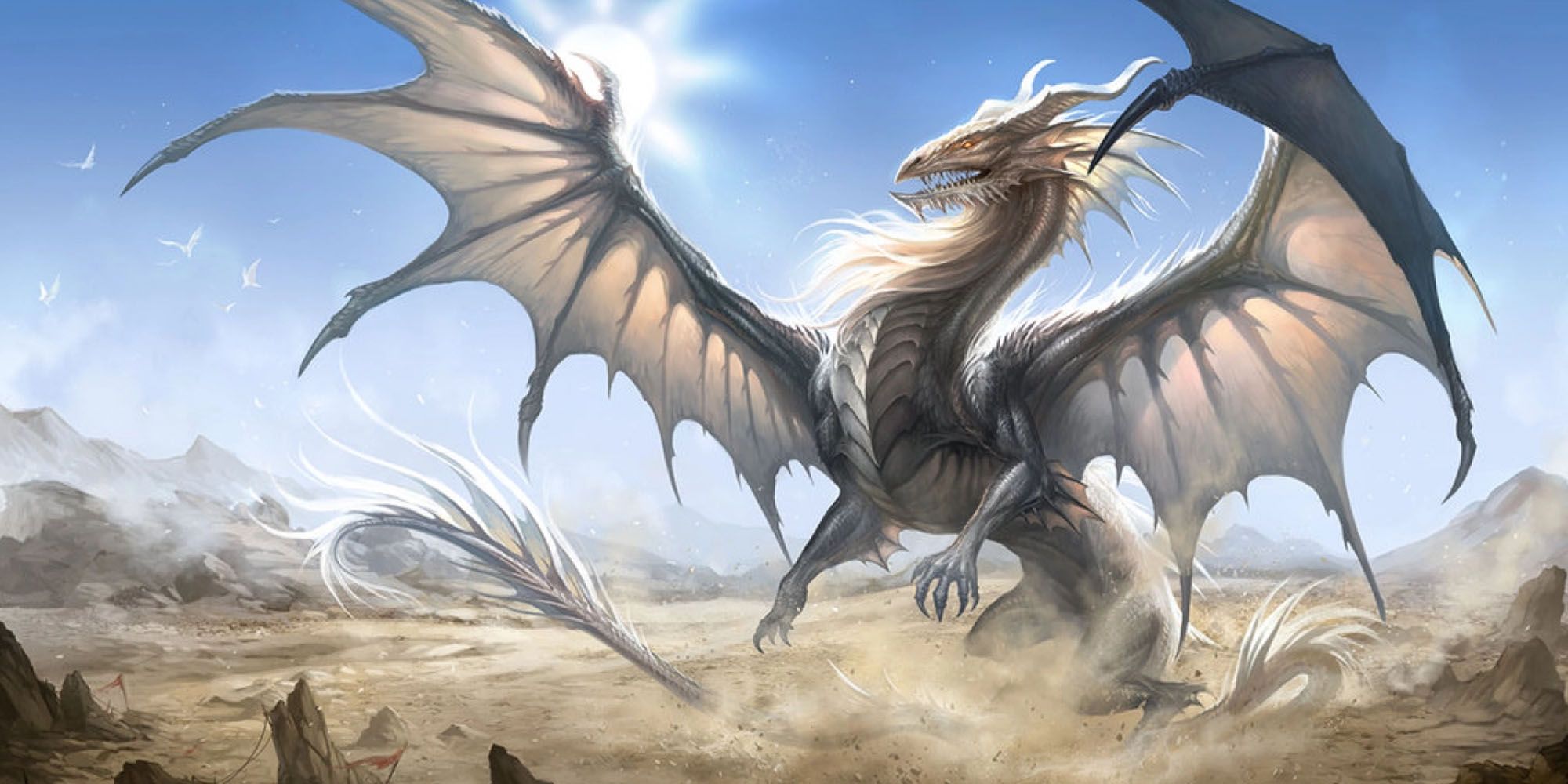When most people think of dragons in relation to Dungeons & Dragons, it is the powerful and calculating chromatic dragons that come to mind, but like all things in the planes of existence, there must be balance. That is where the metallic dragons come into play. Metallics are just as powerful and majestic as the chromatics, and while they are also equally dangerous, they tend to be much more reasonable than their evil-aligned counterpart.
There are nine known types of metallic dragons. Most of them fall on the good scale, but a couple of the rarer metallics can be unpredictable to the point that they've been considered evil. As with all dragons, take heed when approaching because it's impossible to know beforehand what to expect.
Gold Dragons
Gold dragons are considered to be the very model of dragonkind. They are staunch foes of all that is evil and unlawful and will dedicate themselves to causes that seek to eradicate those who walk the dark and twisted paths of evil. In combat, they actually prefer to parlay before a battle to both assess the strengths and weaknesses of their enemies and determine if a fight is actually necessary.
These strict adherents to the law tend to be very solitary, making their lair in areas carved from stone, such as caves or castles. They have shapeshifting abilities that allow them to take on mortal forms, which they sometimes use to assess the situation in nearby villages or even to play the part of bait in luring evildoers in to catch them. They have access to a wide array of fire-based magic, as well as debilitating spell effects such as sleep and slow. Their breath weapon is fiery, and they can also expel a weakening gas to make enemies more vulnerable.
Silver Dragons
Despite the silver dragon's inherent belief that they are the most superior creatures in existence, they had a deep fondness for humans and elves that prompted them to use their shape-changing abilities to walk regularly among them. In fact, silver dragons prefer the company of mortals so much that they also prefer their mortal form over their dragon shape in most instances. Though they are lawful good creatures, they don't often go out of their way to eradicate evil unless others come to them and ask for their aid.
Similar in appearance to white dragons, they can also be found in places white dragons might inhabit, like icy mountains and snowy caverns. They also tend to form clans, which is an unusual trait in a dragon, as they are generally solitary creatures. Silver dragons, much like the other metallics, rarely look for a fight and would prefer to avoid one if necessary. They don't like killing, but that doesn't mean they aren't dangerous if provoked. Their breath weapon is icy cold, and they can also breathe out a paralyzing gas.
Bronze Dragons
These coastal dragons have powerful aquatic abilities and prefer to spend their time along the sea where they can make use of those abilities. Lawful good in nature, bronze dragons are curious creatures who, much like gold dragons, will not abide evildoers. They also possess shapeshifting abilities, taking on forms of animals or humanoids to walk among mortals and, occasionally, take part in great battles without generally revealing their nature.
When it comes to combat, these dragons prefer melee, getting up close and personal with enemies to display their dominance and superiority when necessary. They have electric breath weapons and have a gaseous breath that can mess with the minds of enemies, forcing them to flee for a time or filling them with dread and fear. Due to their proximity to coastal regions, they have often provided protection for sailors who ask for their aid, though the more cunning of their kind might only do so if they are well-paid.
Copper Dragons
Chaotic good in nature, copper dragons like mischief and mayhem best, considering themselves to be highly skilled tricksters and pranksters. They not only loved a good joke but loved telling them as well, though they do get a bit annoyed when others don't think they're funny. Their love of entertainment makes them particularly partial to Bards, who are often welcomed within their lairs and sometimes even have their own space set aside within so they can visit often.
They make their lairs in uplands and hilltops and often create false walls within them where they can store their most prized possessions. They love treasure, so much so that they have been known to be a bit on the greedy side, but they also hold companionship in equally high value. Their breath weapon is acid in nature, and they can also let loose a slowing gas to keep enemies from escaping too quickly.
Brass Dragons
Considered to be one of the weakest and most benign of the metallics, brass dragons are also one of the most sociable. Known for their love of conversation, they can keep a comrade talking for endless hours and are generally fluent in hundreds of languages and dialects. Making their lair in arid, desert regions, they often find themselves in conflict with the blue chromatics who dwell in the same areas.
When it comes to fighting, brass dragons would rather not. Their love for conversation means they will more or less try to talk their way out of a fight if possible, engaging enemies in hours of long-winded talking. In the event that they can't avoid combat, they are more likely to put enemies to sleep with the gaseous form of their breath weapon so they can hightail it out of there before the foe wakes up again. If it does come to a fight, however, their main breath weapon is a powerful stream of fire that'll make lesser enemies think twice about forcing combat.
Less Common Metallics
Some of the less common metallics can be tricky to deal with, like the mercury dragons, which are whimsical to the point of being considered mentally unstable. Mercurial and unpredictable in nature, they thrive on stimulation and chaos and have been known to actually provoke a fight simply because they're bored. Highly intelligent iron dragons are one of the most dangerous of the metallics because their strict adherence to lawfulness has actually pushed some of them to the side of evil. Iron dragons don't actually like to fight, preferring diplomacy and reason instead, but if provoked into battle they make for deadly foes.
Steel dragons are rarely seen in their dragon form, preferring to live out their days in mortal form in human cities like Waterdeep. Despite avoiding their true form, they often have a telling feature, such as steel-gray hair. The rarest of dragons is the platinum dragon, which is so unheard of most believe there is only one true platinum: Bahamut. While there have been other platinum dragons to make an appearance throughout history, Bahamut is not just the deific representation of metallic dragons, but a rarity even among his own kind.

